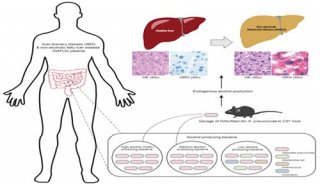Nuclear Receptors in Lipid Metabolism and Toxicity

Nuclear receptors are transcription factors that are activated upon binding to its ligands. Initially, they had been classified as classic endocrine nuclear hormone receptors and orphan receptors. However, further studies have led to the identification of lipid ligands for some of these ‘adopted’ orphan receptors, which are responsible for lipid metabolism, storage or elimination. One of the characteristics of these receptors is that they act by forming heterodimers with retinoid X receptor (RXR). The receptors include peroxisome proliferators-Activated receptors (PPARs) for fatty acids, liver X receptor (LCR) for oxysterols, Farnesoid X receptors (FXR) for bile acids and steroid xenobiotic receptor/X receptor (SXR/PXR or Nsil2) for xenobiotics. Other orphan receptors also require RXR for its functions are vitamin D receptor (VDR) for vitamin D and retinoic acid receptor (RAR) for retinoid acids, although these receptors are not involved in lipid metabolism. Upon binding to various ligands, three classes of proteins are synthesized including lipid binding proteins, the ATP-binding cassette (ABC) transporters and cytochrome P450 member proteins which catalyzes lipid anabolism, metabolism and elimination. In addition to lipid metabolism, some members of the cytochrome P450 family genes are responsible for activation of procarcinogens, detoxification of environmental toxins and metabolism of drugs and xenobiotics. In particular, CAR, Nsil2 and recently identified VDR are important in up-regulation of these cytochromes. Of all the human cytochrome P450 genes, only a few CYP1A2, CYP2C9, CYP2C19, CYP2D6, CYP2E1 and CYP3A4 account for most toxicity effects, specifically CYP3A is responsible for clearing approximately half of the clinically prescribed drugs. For instance, acetaminophen, one of the most commonly used drug, is toxic in high doses due to the activation of CAR and the drug’s subsequentconversion to acetyl-p-benzoquinone imine (NAPQI) by CYP1A2, CYP2E1 and CYP3A.
Contributor: Yen-Liang Chen, PhD
REFERENCES: Chawla A et al. Nuclear receptors and lipid physiology: opening the X-files. Science. 2001 Nov 30;294(5548):1866-70. Ding X, Kaminsky, LS. Human Extrahepatic Cytochromes P450: Function in Xenobiotic Metabolism and Tissue-Selective Chemical Toxicity in the Respiratory and Gastrointestinal Tracts. Annu Rev Pharmacol Toxicol. 2003;43:149-73. Drocourt L et al. Expression of CYP3A4, CYP2B6, and CYP2C9 is regulated by the vitamin D receptor pathway in primary human hepatocytes. J Biol Chem. 2002 Jul 12;277(28):25125-32. Johnson EF et al. Regulation of P450 4A expression by peroxisome proliferator activated receptors. Toxicology. 2002 Dec 27;181-182:203-6. Lee CH et al. Minireview: lipid metabolism, metabolic diseases, and peroxisome proliferator-activated receptors. Endocrinology. 2003 Jun;144(6):2201-7. Tirona RG et al. The orphan nuclear receptor HNF4alpha determines PXR- and CAR-mediated xenobiotic induction of CYP3A4. Nat Med. 2003 Feb;9(2):220-4. Wang YX et al. Peroxisome-proliferator-activated receptor delta activates fat metabolism to prevent obesity. Cell. 2003 Apr 18;113(2):159-70. Waxman DJ. P450 gene induction by structurally diverse xenochemicals: central role of nuclear receptors CAR, PXR, and PPAR. Arch Biochem Biophys. 1999 Sep 1;369(1):11-23. Wyde ME et al. The environmental pollutant 1,1-dichloro-2,2-bis (p-chlorophenyl)ethylene induces rat hepatic cytochrome P450 2B and 3A expression through the constitutive androstane receptor and pregnane X receptor. Mol Pharmacol. 2003 Aug;64(2):474-81. Xie W et al. An essential role for nuclear receptors SXR/PXR in detoxification of cholestatic bile acids. Proc Natl Acad Sci U S A. 2001 Mar 13;98(6):3375-80. Zhang J et al. Modulation of acetaminophen-induced hepatotoxicity by the xenobiotic receptor CAR. Science. 2002 Oct 11;298(5592):422-4.
-
项目成果









